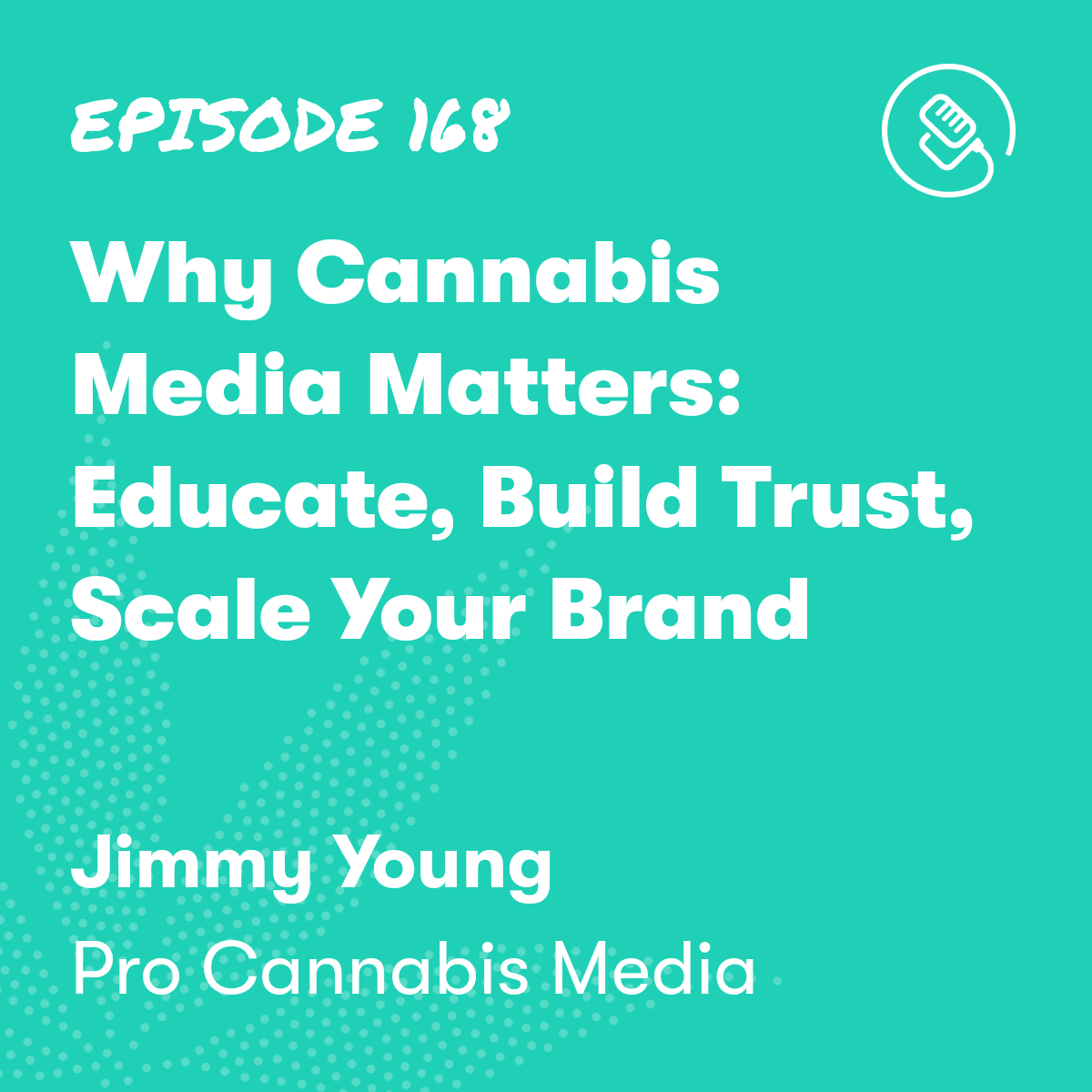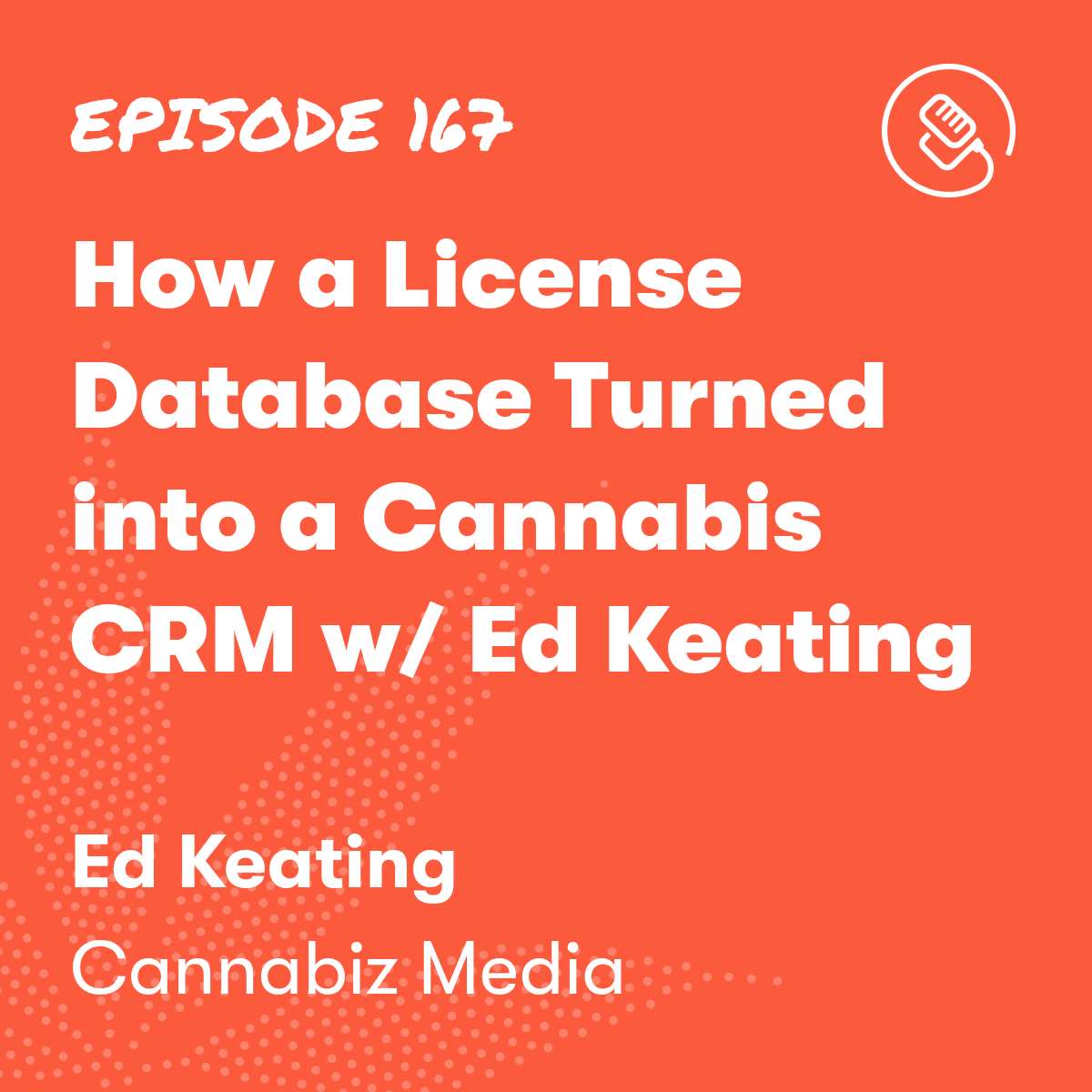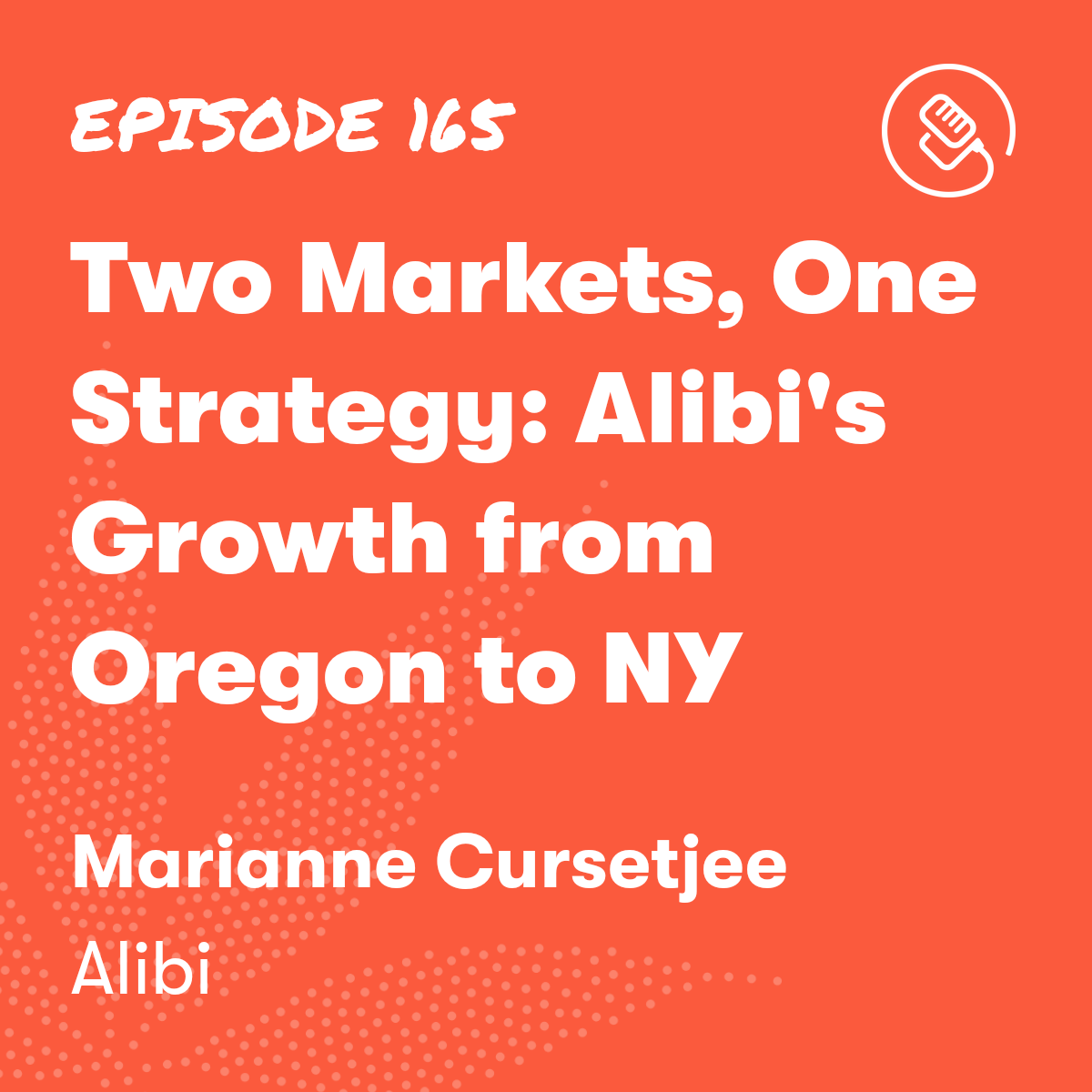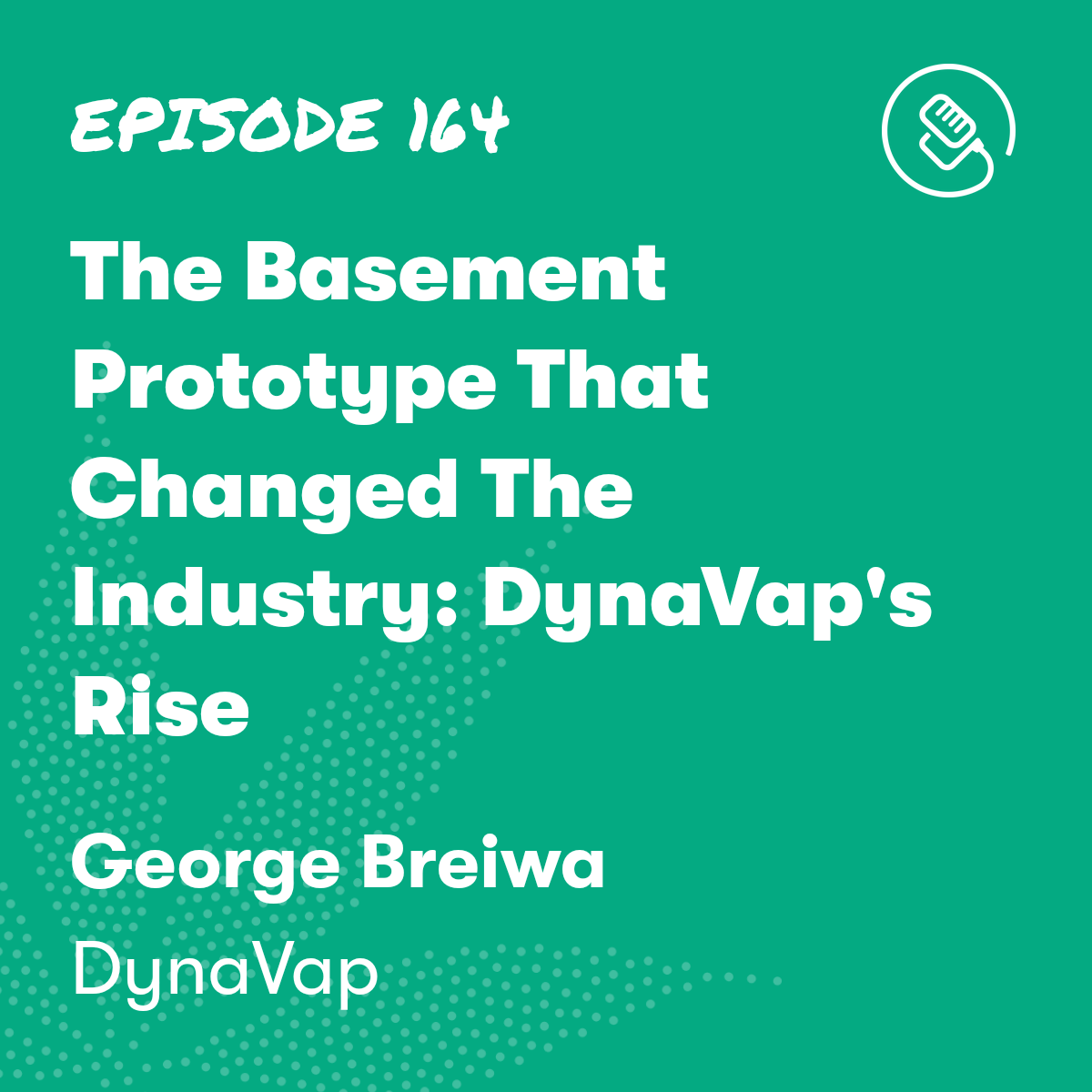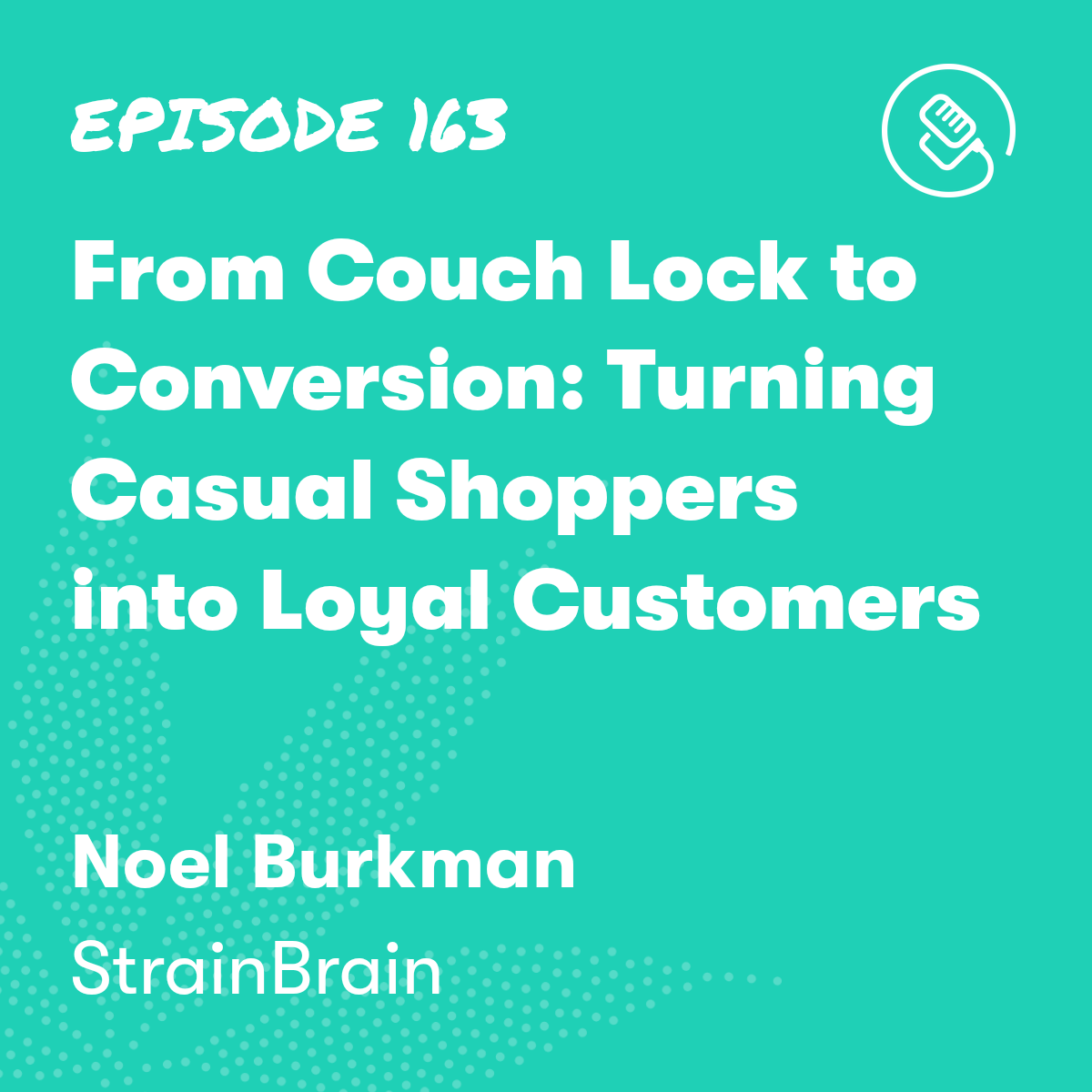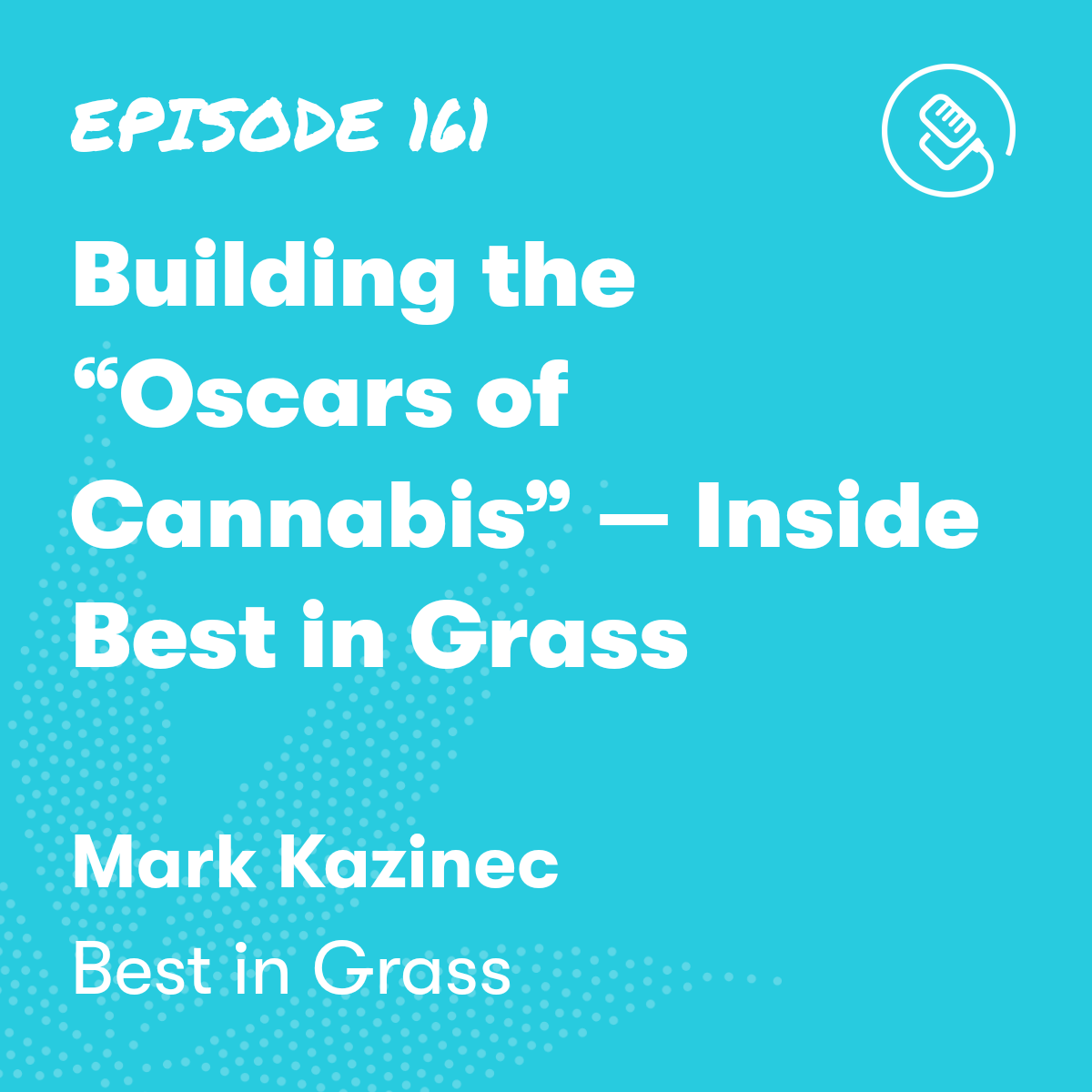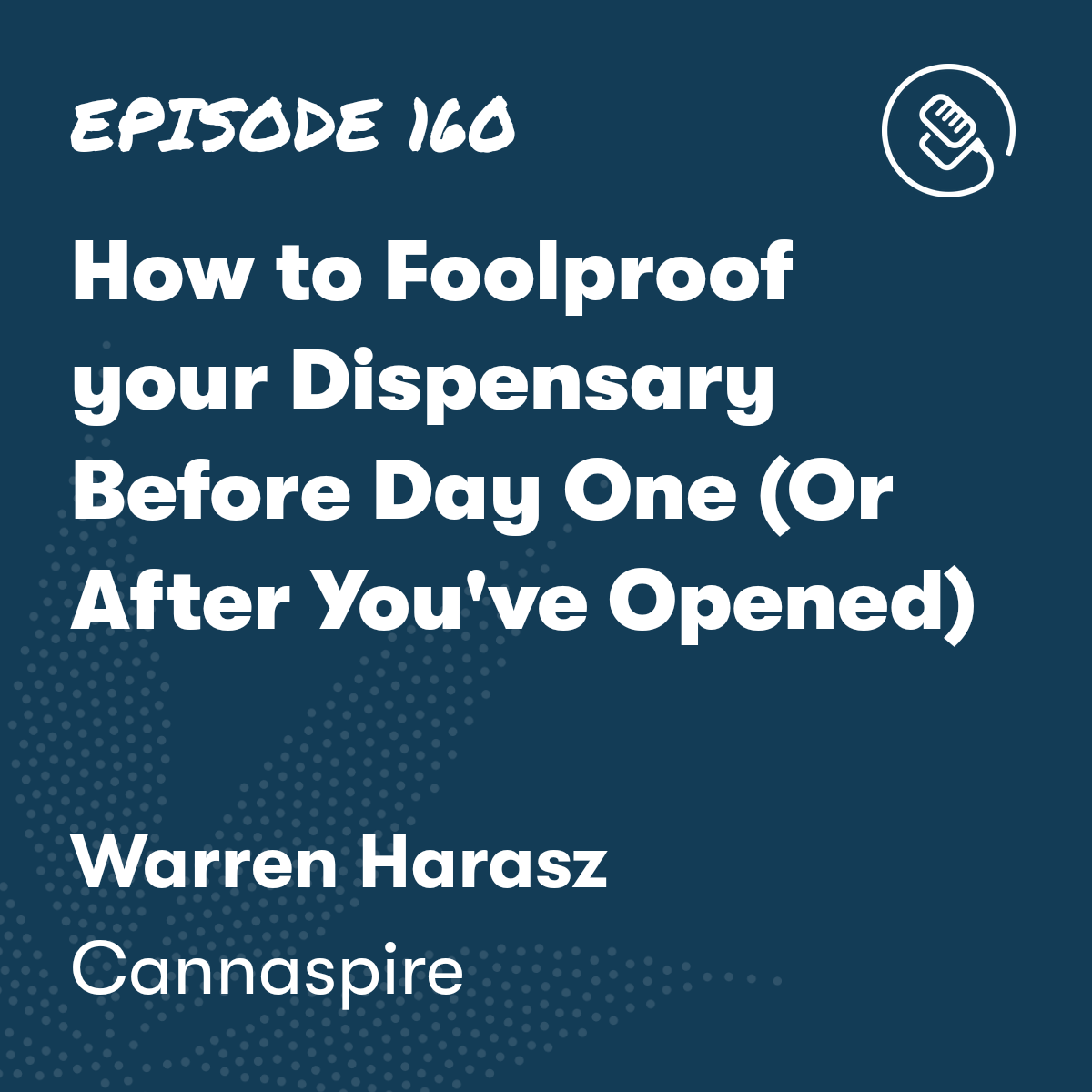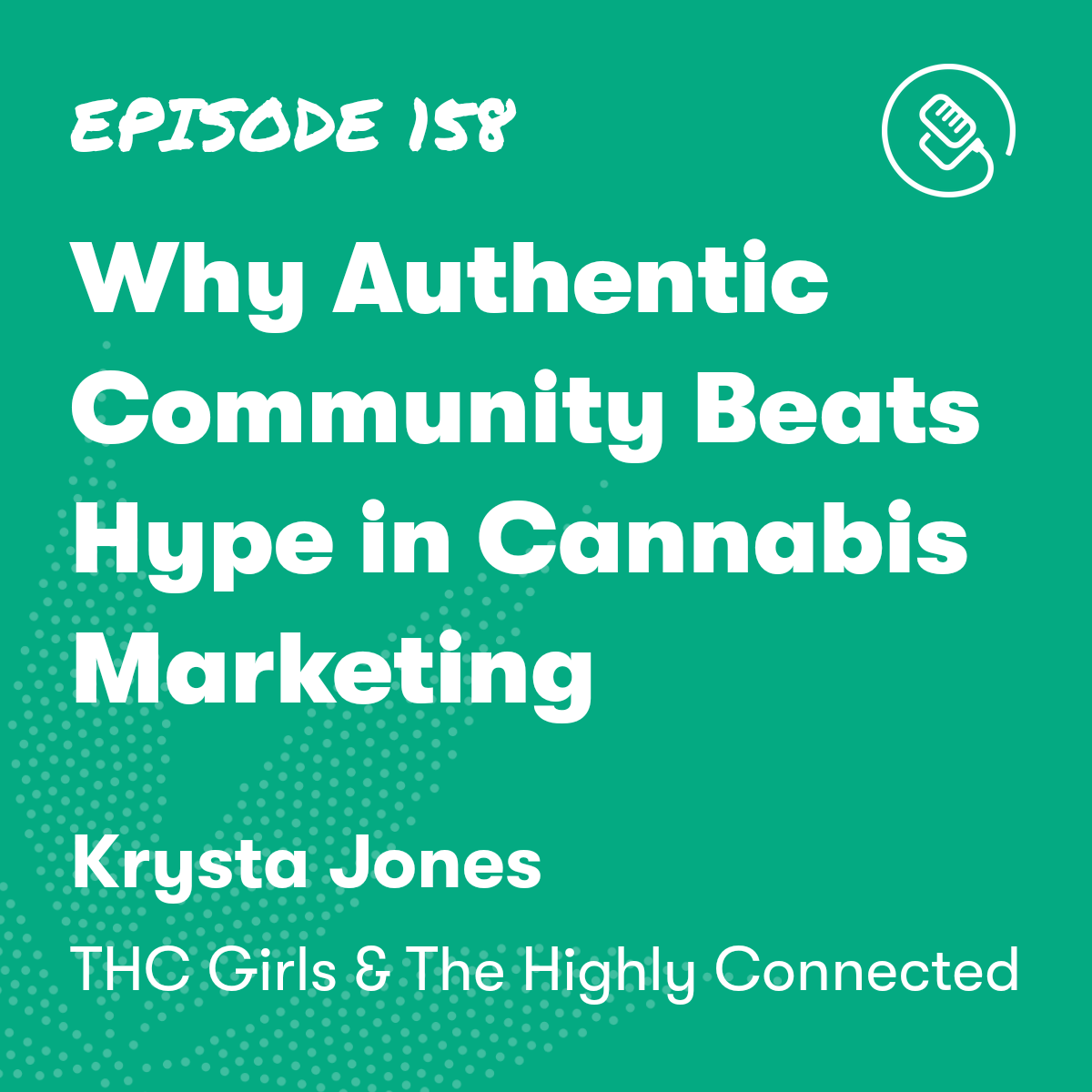

How to Illuminate your Cannabis Business with Successful Branding
Episode Description

Episode Transcript
Tommy: Hey guys, in this episode, we are joined by Andrew D'Angelo and Christopher Peek, the principals of Pipeline. Together, they have over 30 years of experience helping businesses grow and scale to the next level. Andrew and Chris talk about the importance of branding. And how important it is to get branding right, to get your business to the next level, as well as give entrepreneurs advice who are struggling in their business on what to do next to turn the business around.
We had an awesome conversation. That's always fun having these two on. I hope you guys enjoy.
You guys have, you guys bring so much experience working with these top tier brands. If, you know, for somebody that's listening today, that's starting a, dispensary, a retail dispensary, or, you know, have been operating for a year, you know, what is, uh, what is, what is, why is branding so important? Like, what is a brand?
Why is establishing a brand something that's, uh, somebody should really be thoughtful in doing?
Chris: Uh, you know, the thing I would say is, um, think about branding as personality as, as, as as persona. Um, uh, and I, you know, much like when you go to purchase anything you want, authenticity, you want to know, it's not a, you wanna know, it's not a, um, a sham. And so the way that you approach the market and the way that you approach bringing yourself to the market, it's incredibly important because you're in a lot of ways, you're making a, um, you're, you're kind of making a, a pact with the customer that this is who I am, and, and this is why, you know, you should trust me to buy from me because I'm, I'm legitimately trying to do the best I can.
And I think that one of the things that you see off all the time is the kind of churn of people like, well, is this cute? And is this, is this funny? And is this, is this something that, like, it's always trying to come up with a false narrative about what it is that you're bringing to the market as, as who you are.
And so it's important, it, it's important. Trust in branding is really, really important. Um, it was one of the things that my old boss, um, at Apple, uh, brought to Apple was how do we make sure that people can trust this brand? And so, um, you know, we work really hard to try to figure out, Hey, what's your DNA?
Who are you? How do you fit in the marketplace? What, what's the space you're trying to occupy? And then how do you make sure that, you know, when you communicate out, you're, you're following the guidelines of of, of who you are so that it gives you a, um, it gives you a north star, right? It helps you to make sure that the decisions that you're making are, are founded, are grounded in something that is legitimate and honest and real, and not just some crazy, you know, machination of, of of, of kind of, you know, pseudo branding perspectives.
And so it's really important. It's really important. I, I actually kind of hate the word branding in a way. I know it's silly, but it's, it's, it's really just about who are you and how do you want to be, like, what do you wanna be out here and how can we help you have a voice that is legitimate and that is meaningful, that will resonate with a customer base that you're trying to go after.
Which retailer do you think has the strongest brand in relation to who they are and who they serve?
Andrew: Well, I mean the brand that everyone's most familiar with that is dominating. The scene right now is cookies. Um, what cookies has done, cookies is authentically themselves. There's. A burner didn't try to be something he's not. Um, he, named his brand from a strain of cannabis. Um, so he was connected to the plant, um, and he knew that his people he was smoking weed with and doing music for, and making music with were all urban youth stoners that really cared about good high quality cannabis. And so he decided to focus his whole business on that. And he focused on the strains, he focused on the weeded, and he focused on his culture. And because he was so authentic, he blew up. Okay. He's not trying to get. Middle aged guys like me and Chris into his store. Okay. I mean, we'll go, we'll go. But that's not what he's trying to do.
He's trying to get somebody who's 23 years old who listens to hip hop, who, um, you know, grows and, and perhaps, um, is in the culture themselves,
most likely is in the culture themselves. And, and that's who he's going after. That's, that's, that's the identity by which he has organized his whole thing around. And he's, and it's him. It's, it's, it's who he is. So he doesn't have to put on a mask, he doesn't have to play a role. He can just be himself and, and smoke joints and blunts all day long. Just like Snoop. Just like the world that he comes from. So that's one brand that is obviously the most obvious brand. Um, then you've got, you know. Big corporate brands, right? Like the MSOs and they tend to be branded much differently, right? Um, less personal, um, less trying to be more for more people. Um, so like one of the big brands is called Rise. Rise is a GTIs brand. Um, well Rise has a different feel and identity than, than Cookies, right?
Um, rise is trying to appeal to a wide variety of people. Um, their demographic cuts across all age groups. Um, and you know, they're in, I don't know, 10 or 12 states and they're trying to create something that people, no matter what state you're in, you go into this, those dispensaries and the experience is very much the same, right?
So that's what they're trying to do. Um, uh, and you know, I. Everybody has their own preferences. You know, my job is not to tell people what brands they like but our job is to figure out what is the best expression for your brand as an entrepreneur. Okay? And, and, and how are you gonna be your version of cookies or your version of Rise? And, and how are we gonna do that? Right now in the, in the cannabis landscape, there's a lot of branding that's very similar to each other. Uh, and, and a lot of that has to do with frameworks. Some of that has to do with regulations, uh, preventing people from calling themselves this or that, or identifying in a certain way. Some of that is people are just moving really, really fast and they have to throw a name up on something, a website or something, and they're not really doing the thoughtful, mindful work of what is this identity? Just let me call it green something or can of something and I'll be fine. Um, and you know, we want to get more specific than that because if you look at a, a screen that has a thousand white dots on it, you don't notice any individual dot.
All you see is a thousand white dots. But if you look at a screen that has 99, 999 white dots and one red dot your eye immediately goes to the red dot. We're trying to make sure your company is a red dot, not a white dot that's lost in the sea of white dots.
Chris: And I think it's just to add on to that too, I think I I think that it's important to, like, you know, that thing, I can't tell you how many times you go look at a, a website for a cannabis company and it, the color is green.
Tommy: So, you know, when somebody is, is looking to establish the brand, where should they start? Like, what are the questions that, that they should ask themselves
Chris: Interesting that you should ask that question, my friend.
Um, so one of the things we do as a brand, DNA, um, deep dive
and it takes, it takes it, you know, we can do it at a, the cost solve. One of the things that Andrew and I really pushed on at the very beginning of this is making sure that we're not pricing ourselves out of being helpful.
If you'll, so, um, we do brand DNA work. That's a product that we do through ACV. Um, and, you know, we do it for big brands, medium sized brands. It can cost $150,000, it can cost $75,000. But we have a, a, a tight version for the cannabis space. That's, well, well, well below those costs, um, affordable. And we take you through a se, a kind of series of, um, interviews, questions, workshops, to help you figure that out so that you walk out with this playbook that says, Hey, I know, I know who, I know who I am.
And, and that way when it, it, it acts as a, a wonderful filter device, a filtration device, so that when you're making decisions, you're making decisions based on this work that we've done together, um, based on like what's come out of these brand DNA workshops. So that you can, um, make sure you're making the right decisions.
So if somebody says, Hey, we're thinking about, you know, dropping weeded out of airplanes, da da, and you look, you're like, well, that's not who we are. And you know who you are. You can make, like, you can make healthy decisions. So that's a, that's a good starting spot. Um, I think unfortunately what happens in the cannabis space particularly, because some of it moves so quickly once you get your license, and this is stuff Andrew can say more to, but, um, speak more of, but you're trying to turn everything around so fast that you just end up making a lot of, it's like a Pollock painting.
Tommy: Is there, is there a, uh, kind of a playbook that retailers should really hone in on when growing their business? Because, you know, for me, I often see retailers try, we talk about this all, uh, all the time. Um, at Kaya there's really only two ways for you to increase revenue. One, can increase the number people that you serve, right? Number of people that come through the door or, uh, as well as making sure the people that you serve yesterday come today or the transaction size. And oftentimes entrepreneurs, they, they want to fix the revenue problem by opening up another location when they're not ready. Mm-Hmm.
Chris: That's, I have to tell you, that is the thing that makes me the most you, you're kind of hitting on something. Yes. Basket size is important.
Customer retention's important. Conversion, super important. Um, uh, and uh, coming from Apple where conversion rates are the craziest things I'd ever seen, um, all of those things incredibly important.
But time and time again, what you see people trying to do is they try to save their business by expanding. We're gonna open in 50 markets. I just, to be honest, I think that's med men's problem in part, I. The, and, and there's a kind of arrogance in that thinking that you can go out and no matter what, you're gonna make this work.
I'm just gonna exp expand. I'm just gonna puff up my chest, open up 10 more shops and this is all gonna work out, brother. I'm here to tell you, spend a little bit of time figuring out what your program is, understand who you are and how you operate, figure out what that, understand what your conversion success looks like and how you can maximize that.
Understand where your margins are, what are the products that resonate with your customer, and then before you go into the next place, going back to something that you said a second ago, Andrew, understand your demo. What are we talking about? Who are the people you serve in this community, right? And what is gonna be mean?
What, what are the products they're looking for? So it's very, it's, you know, it's a complex puzzle. There's lots of pieces to it, but again. Go slow to go fast, calm down for a minute and figure it out. And to figure it out. It helps to have some folks around that have been doing it for a long time because we've seen the successes and the failures.
I've messed up a lot of stuff in my life. I've had a lot of success in my life. I don't repeat the me, you know, I try not to repeat the mistakes and I try to repeat the successes and um, and I think that's one of the things that, you know, Andrew and I talk about is, and we look at, we look at people just get out over their skis so you are right, but it's, and I'll say something else, tell it's never one thing.
It's 15 things. It's 50 things. It's incremental things. It's a lot of stuff. And so you have to really sit down and focus on it and say, okay, what's working? What's not working? How do I lean into what's working? How do I reduce things down to a place where I can control and manage it? how do I make sure that I have the right operational structure in place?
I have the right strategic approach to the market. I understand where I'm going, what I'm doing. It seems like silly shit, but. Honestly, name another thing in your life where you're having success, where you don't sit down for a minute and go, okay, what am I gonna do?
Tommy: Well, you know, it's funny 'cause we have this experience all the time at work is you can put two entrepreneurs in the same city, same funding, same backing. Five years later, somebody's running a multi-unit operation that's highly profitable and the other one's struggling to survive. So what's different?
It's the choices entrepreneurs make.
Chris: That's right. And, and I would say this too. It's the choices they make, but it's how they get to the choices. How do you, what, what's the, what is the kind of decision matrix you're using to decide
Tommy: wHat would be a, a, an advice that, uh, you would have for someone listening that's, you know, they don't, they're overwhelmed, right? And they don't know where they should spend their time for the best return in their business.
Chris: Go for a walk. Seriously.
Go for a walk. Calm down. Don't panic. Spend some time really considering what's in front of you, what's in front of you. Don't, people are so reactionary in the, and particularly when you're in a business, 'cause you're in full pan, it's the most, listen, being an entrepreneur is high anxiety all the time.
And so taking the time to be thoughtful, to consider where you're at and what your, what your strategies are. And then I'll tell you this is this thing I learned. Um, it was a boss that I had when I went to Apple, used to use it. It came from Steve Jobs go three wise deep talk to three wise people. Ask three wise three questions.
All the, all of these ideas about what why can be go three whys deep check, check again, check again. Don't be so arrogant to think you have the answers. Don't be so arrogant to think that you can muscle your way through it. Be humble. the time to think about it. Go ask some people. I, years and years ago, I, I worked with this really fantastic human being and he did something crazy in Chicago back in the eighties.
And, uh, without going into the details of it, everybody thought it wasn't gonna work. And he went to the mayor, he went to the council of the city, he went to everybody in the world and said, what do you think about this? he got them to get skin in the game with him. And he, he, he had a, with that, with those connections, and he got great advice and perspectives and he created the platform.
He could launch what he had off of. And he was incredibly successful. And so, you know, I, I'm always an advocate of, go for a walk, breathe for a minute. Calm, calm down, take it down, and then look at it with clear
Andrew: You won't, yeah, you won't make good decisions from a place of feeling overwhelmed or panicked. It's just not possible. You're in flight or fight mode and we just don't make good decisions. So that's where taking a walk. Breathing, have a meditation, get in nature, play with your kids, play with your dog, whatever it is,
Chris: Get perspective,
Andrew: Bust that get a little perspective. Doesn't mean you won't feel a little emotions and pressure, but that's different than panic and overwhelm, all right? And so we wanna get back to a baseline emotionally first. Um, then get help. Okay? Um, sometimes that help is from your own team. Oftentimes it's internal.
You're not seeing the solution that's right in front of you, um, or the solutions. Um, and your team knows what they are. All right? And they've probably been trying to tell you, but you haven't been
Chris: So true. Listen to your, listen to your staff. Listen to the people that are in the game with you. Listen to them.
Andrew: They're, yeah, they're, they're probably trying to give you a message and you're probably not hearing it. So when that happens to me, I, I double down on my effort and I say, okay, I'm gonna go to them with a survey. I'm gonna go to them with something that they can give me feedback, advice on. I like the word advice better than the word feedback. Um, um, and, and then that is incredibly valuable information that probably has solutions contained within it. Then you may need to look outside of the organization to somebody like Christopher or somebody like me, uh, uh, or somebody like pipeline, and try to transcend the, the plateau that you find yourself hitting as an entrepreneur, right?
Because the plateaus are the things that drive us crazy. Um, you know, almost going bankrupt and running outta cash is obviously the most and
Chris: It is horrible. horrible.
Tommy: Mm-Hmm.
Andrew: Horrible, but, but equally well, not equally, but almost as horrible things when you hit this plateau and you're just like bumping up against it and it's driving you crazy. Um, and so that's, that's when you know, getting outside help and outside perspective, once you've called all the information and, and advice from your own team, uh, and your own ecosystem, that may include your investors, that may include other people, um, might include your spouse. Um, and, um, and, and then, you know, we can put together a plan because part of when we, when people are hitting those plateaus and they reach out to us, we're gonna be very curious and, and try to figure out what is the data?
Dr, what is the data saying here? Okay. Um, because data numbers, sales reports, inventory levels, debt levels, all that, it doesn't lie. It's not influenced by emotion. It doesn't, it's not influenced by exuberance or the opposite of exuberance depression. It's not, it's not influenced by any of that. It's just the truth of what, what the business is. So we analyze that and that gives us, you know, non-emotional information that we can start to say, okay, it looks like you, um, spent all this money on billboards, but you didn't do any email marketing. Um, uh, and that's how you're,
Chris: that's a, that's a, that's a great one. Like nobody can, you can never really tell what billboards are doing for you, but you can tell what dms are doing direct mail, you know, mailings are doing for you. You know that that's, that's very true.
Andrew: and so like, and especially in cannabis, 'cause there's just, there's not a lot you can do with advertising in most places, especially in Canada. It's crazy. Um, so you have to get really creative with this stuff and the customers that are coming into your store, you gotta get their information.
You gotta get their, their data. You have to communicate with them. Yes, they will opt out, some of 'em will opt out. But those that love you and care about you and like you will stay engaged. Um, and getting a basket size up with email marketing is, there's probably very few things that are more effective than that because you already have a community of people that have been there that like you enough to have given you their email address. Um, or maybe you got it some other way, but they're staying engaged with you. Sometimes that's how we grow. We don't grow so much by like, trying to get a bunch of people that have never been in the shop before, in the shop. Sometimes it's just getting people who've been there once but haven't been there for a while to come back or somebody that, or get them to spend a little more when they do come in or come in five times a month instead of four times a month. Um, um, or have a special event that brings, um, uh, uh, your, your top customers in for a special thing, you know? And these are ways where you can engage the community you already have and that can help transcend those plateaus.
Chris: a great, that's a great, what Andrew's saying is really important too. I think understanding the customer journey, understanding your customer profile, being clear about what your, what the cost of customer acquisition is. This is all data that's important, but the piece that offsets that is making sure that you're keeping your ego out of process, right?
Don't let your ego, I, I honestly ego's about performance. When I get out there and I start performing my job, I'll let my ego come into play because I want to do a good job. It's important to me. That's my ego playing out. But why I'm in process, everything has to be on the table. You have to be able to look each other in the eye and say, this shit is working or it's not working, and if it's not working, why and what am I doing to make sure that it goes better?
Tommy: So, I'm a dispensary owner. I have maybe three locations, and I just don't understand how I can run more efficiently or how I can increase sales. I'm just like, I'm, I'm lost. Right? There's just so many things going on.
Chris: It's a diagnostic thing, Tommy. It's not something like, I, I think everybody, this is the, this is the truth.
There's no miracles, there's no easy fixes. It's a diagnostic thing. What the difference about the way you work with folks who are in transition, which is what you know are, are in that place of trying to scale, is that, um, you know, you, you have to diagnose the entire, you have to diagnose the patient.
You have to look at every piece of your operational strategy. You have to look at how you're doing everything from your operational tech stack to, um, your staffing, um, your, uh, um, you know, how you're, how you're, uh, dealing with logistic procurement. And Andrew knows this better than I do 'cause you know, Andrew run dispensaries.
But, um, but I will say this, it's a diagnostic approach. You need to have. You, you come in and you look at it with a clean set of eyes. One of the hardest things is when you're inside there all the time, whatever it is, I don't care what it is, you get these kind of blinders that you eventually build where you're just seeing that and it's hard to get perspective
Andrew: well, yeah, with the dispensary, you know, that you just described, Tommy, you gotta run it every day at the, and at the same time try to improve it. So those are two. Different things.
Um, and so that's, that's the first thing that we wanna make sure that we're, we're organizing things so that you can do
Chris: Yeah, build the plane. Fly the plane, right? Build the plane. Fly the plane.
Andrew: yeah. Then looking inward, like Chris said, is super important. Um, uh, audits, diagnostics, looking at everything from team to sales data to debt levels, to inventory levels, all that stuff. Then you also have to look externally, uh, and this is what I find with dispensary owners. Oftentimes this happened in my own companies. You're so darn busy trying to put out all the fires and run the day to day that you don't even do your competitive analysis.
Right? And so when's the last time you went to one of your competitors, um, and checked it out? You know, and that's something that somebody on our teams have to be doing pretty much every week, every month you've got, because there's new competition coming online all the time. You also have to understand, you know, what's happening industry-wide, right? So you have to look inward, you have to look outward, um, and then you have to access data, uh, that as much data as you can, um, to try to see the landscape that is currently blinding you. Um, and by shining those headlights, those data headlights in on the dark road, you start to see, you start to see the deer so you don't hit anything. Um, and then you start to be able to go faster because you're seeing the road better. And then next thing you know, you can add a car or two maybe. Um, and then you're growing again. Um, uh, and so, you know, when you look inward, you look outward. You look at all the data and not, not just talking about cannabis data.
I'm talking about all kinds of geo-fencing data, all kinds of data that we have available to us. Um, and, and you look at all of those touch points and you, and a strategy begins to emerge. Um, a a growth strategy begins to emerge. We might discover, Hey, we're we, we haven't been talking to our own customers enough.
There's more juice that we can squeeze out this lemon or, wow, this, uh, one of our competitors is kicking our butts in this particular area. We better, um, beg, borrow, or steal whatever they're doing, uh, so that we can offer the same thing to ourcustomers.
Chris: Or maybe your store's too, or maybe your store's too big, or maybe your store's too small. Or, and the other thing I'd say to add to this too, is, and then once you start building that strategy, what are the checks that you're gonna do along the way as you implement the strategy to make sure it's working so that you're taking the time to say, okay, we, we implemented, you know, we implemented A, B, C looks like B'S not working.
Why is B not working? So it's, it is it, it's, the silly thing is, is it's oftentimes, you know, most of the stuff, it's just the act of doing it and then having somebody help you.
Tommy: You know what you say
Andrew: and the help is really important because like, like just, just very quickly we're gonna have workflows when we're talking about transcending plateaus and getting things to grow.
Again, those workflows, if they're managed by an outside team like us, you know, they're being managed and they're not getting Caught up in the day to day and, and, and not being paid attention to because you had to run the shop that day and so you couldn't get to the workflow. Um, well, we'll, we'll be tracking those workflows and we'll be pinging you and we'll be saying, Hey, you missed a deadline on this, uh, guy. I need this document.
I need this, I need you to approve this artwork, whatever it is. Um, and so we get that workflow going again. All right? And this is where a good consultant will also be project managing this stuff so that, you know, you don't fall behind on it and, and, and, and, and, and you've got a third party that's tracking it for you, right?
So it doesn't fall in between the operational day-to-Day cracks
Tommy: once you've done a diagnosis and you've helped turn the business around, is there any services that you have? That is just a really good maintenance. Like, you know, entrepreneurs, they fall back into the chaos of running a business. You know, what do you guys have in place that just helps,
Chris: We have on,
Tommy: involved, but it just helps business owners, um, steer in the right direction. Mm-hmm.
Chris: sometimes it's fractional leadership, like there's some groups that I've worked with where like maybe in the beginning I'm giving 'em 20 hours a week, and then after that I give 'em five hours a week. I give 'em every, or I give 'em five hours every two weeks. And then we sit and we look and we just, and that's a lot of analysis and like, like, you know, analysis and strategy adjustments, what's working, what's not working.
And then you have an opportunity and if you wanna ramp back up some stuff back up because we have, find another area. I'm, right now I'm working, um, with a, a huge client on the ACV side, um, potential, um, massive program. And a lot of it for them is saying, Hey, what's the lifecycle of engagement right in the beginning, maybe it's slow as we talk to each other and try to figure it out.
And then we ramp up to a much higher, um, engagement profile, which has us doing a lot for them. And then after a while it starts to come back down. But you stay engaged and then sometimes you don't need it. Sometimes. Listen, oftentimes I'm always like, I'm always trying to figure out how to get you to a place where you can hire somebody to then do the job right.
In-house. Like, and, and oftentimes a part of it and, and obviously in looking at any kind of operational approach is what's going on with your staffing and your leadership? Is that working? Do you have the right people in the right seats? Right? And so sometimes, you know, you can be incredibly effective in reducing maybe some of your head count, but getting better, better people in seats.
And so that's, so it's Tommy, it's lots of different spaces that you go after, but at the end of the day, having check-ins with somebody that, you know, like if you've worked with somebody and it's been effective and it, and, and, and you've seen success, you should stay engaged with whoever that is for a while.
Like don't, don't cut the apron. Spring strings completely have check-ins, regular maintenance. And then sometimes there's other things in there. Invariably there's other, there's other development works to be done that maybe you want to go after. Because what happens is once you kind of get control and you're like, oh shit, I'm scaling, I can get this to work.
I can get this to work. You'll hit another plateau. You know, and then you go, okay, now, and, and you have to make a decision, Hey, maybe I'm big enough. Maybe this is as big as I wanna be. Right? You know, I'm not gonna try to be greedy and own everything in the world. I just wanna own the state of Ohio. And so, you know, maybe you just, maybe you're just gonna stay there, or maybe you get that spot and go, Hey, you know what, I'd, let's get bigger.
So it's a, it's a cycle.
Tommy: I, I know that we're pressed for time, and I, I just want to thank you guys for coming on and sharing your
Chris: problems.
Tommy: Just quickly, how can our listeners find you?
Andrew: Uh, Andrew deangelo.com pipeline has its own landing page on my website, you'll also see, uh, Chris and his team's bios and headshots on there. Drop us a email. Pretty easy to get ahold of us. Um, I'm all over social media and LinkedIn. Andrew slash DeAngelo or just Andrew DeAngelo. And I know Christopher Peak is also, uh, very active on LinkedIn.
Tommy: Thanks so much guys for,
Chris: Not a problem. Tommy. Take it easy.
Andrew: Thank you

